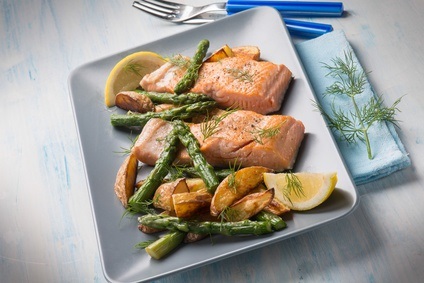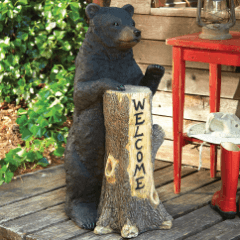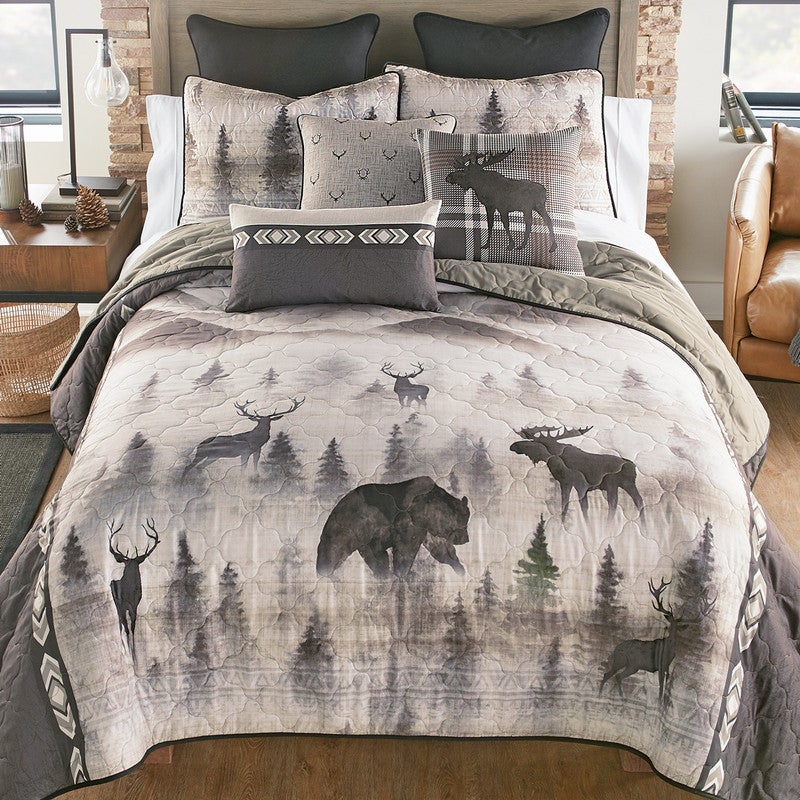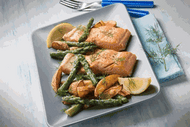Salmon and Good Health
Aug 15th 2018
 Salmon is referred to as the steak of the sea. It is succulent, goes with many different dishes and there is a large variety from which to choose. Some of the most popular types are Atlantic, Chinook, Chum, Coho, Pink, and Sockeye Salmon. Pink, Chinook, Chum, Sockeye, and Coho are from the Pacific Ocean and are considered wild caught. Atlantic salmon are predominately farm raised because they are considered endangered and catching them in the wild is against the law. In addition to the taste, whether farm-raised or wild-caught, salmon can also be a very beneficial part of one's diet.
Salmon is referred to as the steak of the sea. It is succulent, goes with many different dishes and there is a large variety from which to choose. Some of the most popular types are Atlantic, Chinook, Chum, Coho, Pink, and Sockeye Salmon. Pink, Chinook, Chum, Sockeye, and Coho are from the Pacific Ocean and are considered wild caught. Atlantic salmon are predominately farm raised because they are considered endangered and catching them in the wild is against the law. In addition to the taste, whether farm-raised or wild-caught, salmon can also be a very beneficial part of one's diet.
Each species of salmon has different characteristics. Chinook is the largest of the species, hence its nickname "King Salmon" and it can weigh up to 125 lbs. Usually white, red or pink in color, this fish can live up to seven years of age. Coho, before migrating out to sea, tends to spend one-to-two years dwelling in freshwater bodies and is depleted in many areas because it used to be the most commercially sought after species. Chum is the species of salmon with the broadest geographical range and can be found in waters from California all the way to Korea. Since they have a drier type of flesh, they taste great when smoked. Pink Salmon is the most abundant, contains the lowest fat content and is also the smallest of the species. They enjoy a two-year life cycle and can usually be found canned on the shelf in a supermarket near you. Sockeye is the "Red Salmon" and sometimes they find their way into a can as well, but it will usually cost you a little more than the Pink. They spawn in rivers and lakes and they also like to hang out in fresh water for one-to-three years before migrating out to sea. Atlantic salmon, as its name suggests, can be found in the Atlantic Ocean. Unlike the salmon of the Pacific who die after spawning, Atlantic salmon have the ability to recondition themselves (recover, reconvene) and return to the sea for migration and spawning several times over.
All types of salmon provide a good source of protein, vitamins and minerals; however, wild caught salmon is the best because it has lower levels of Polychlorinated Biphenyls (PCB: cancer causing chemical once used in manufacturing), antibiotics, herbicides and pesticides than farmed raised salmon. The levels are higher in farm-raised salmon because of the location of the farms in correlation to the run-off of pollutants from other factories on land; the crops the farmed fish are fed; and, the antibiotics they are given to prevent the spread of sickness in such cramped breeding conditions. The mercury count of all seafood is also of importance because high levels of mercury can be harmful to pregnant women and young children, which is why it is recommended by the FDA that they eat no more than two servings of salmon per week.
On a brighter note, of the wild caught salmon, the Alaskan Sockeye happens to be the cream of the crop. High in omega 3's, essential amino acids, and vitamins A, D, B, B6 and E, Sockeye does wonders for the body. It greatly reduces the risks of heart disease and stroke. It is essential in brain development and function. It even improves symptoms in autoimmune diseases and serves as a fantastic anti-oxidant, which slows aging. With all of these benefits, the next time you decide to eat seafood, or eat anything for that matter, a healthy portion of salmon may be exactly what the doctor ordered.

















